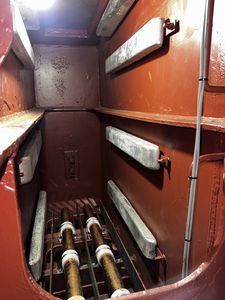

- Products
- Catalogs
- News & Trends
- Exhibitions
Ultrasonic antifouling system
Add to favorites
Compare this product
Characteristics
- Type
- ultrasonic
Description
Ultrasonic Anti-Fouling is a cutting-edge technology designed to prevent the buildup of marine organisms on submerged surfaces, such as ship hulls, propulsion systems, and internal cooling systems. This advanced solution offers a maintenance-free and environmentally friendly alternative to traditional anti-fouling methods, ensuring your assets remain clean and efficient.
How Ultrasonic Anti-Fouling Works
Ultrasonic Anti-Fouling systems use high-frequency sound waves to create a continuous, ultrasonic vibration on the surface of submerged structures. These vibrations disrupt the ability of marine organisms, such as algae and barnacles, to attach and grow, keeping surfaces clear without the need for harmful chemicals or coatings. The system is easily installed and can be adapted to protect a wide range of marine assets.
Benefits of Ultrasonic Anti-Fouling
Environmentally Friendly: This technology eliminates the need for toxic coatings or biocides, making it safe for marine life and ecosystems.
Maintenance-Free: Once installed, the system requires minimal upkeep, providing continuous protection without the need for regular maintenance.
Cost-Effective: By preventing biofouling, the system reduces fuel consumption, maintenance costs, and the frequency of dry-docking, offering long-term savings.
Enhanced Performance: Keeping hulls and underwater systems free from fouling improves hydrodynamic performance, resulting in better fuel efficiency and lower emissions.
Versatile Applications: Ultrasonic Anti-Fouling is effective on various surfaces, including hulls, propulsion systems, seachests, and internal cooling systems.
Related Searches
*Prices are pre-tax. They exclude delivery charges and customs duties and do not include additional charges for installation or activation options. Prices are indicative only and may vary by country, with changes to the cost of raw materials and exchange rates.

